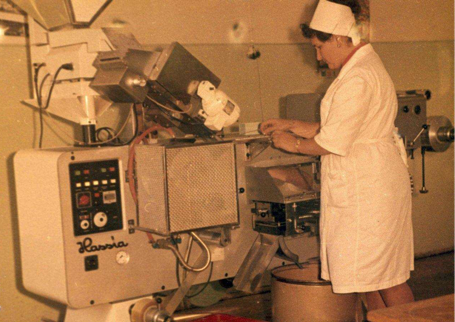24. June 2015.
Kurir, 24/06/2015
Hemofarm turned 55 several days ago. Although, measuring by human life expectancy, it is on the verge of the third age, judging by results, this company is in its prime time.
The first private pharmaceutical production started in Vršac in 1960. Although unusual for Yugoslavia at that time, the young and ambitious pharmacist Nikola Gerdec entered an uncertain private venture.
He led 30 workers in the plant, which was a predecessor of the present time pharmaceutical giant.
It was the time of hippie movement, iron curtain fall, loudspeakers resonated the songs of Đorđe Marjanović and Lola Novaković, and ‘fića’ (Fiat 500) and ‘spaček’ (Citroen Diana) were totally cool. The first medicine produced on a production line was Aminopyrine, the precursor to Midol 100, as we know it today. The beginnings were clumsy, but nobody has given up.
The legend says that the associates of Nikola Gerdec copied the formulations for infusion solutions from colleagues who mixed them manually in the hospitals in Banat. Although financial losses were recorded, the will was nevertheless strong. At the most difficult moment, a decision to build a factory was made in 1973. The first export was achieved during that very year. The eighties were the decade of brilliance. Vršac pharmaceutical factory reached the very top in pharmaceutical industry in the former Yugoslavia.
The dreary nineties demonstrated the full strength of the founding values and the Serbian defiance. The company survived, consolidated, and continued operations. There were also resources for helping community, supporting society and children of employees. In 2006, STADA Group, one of the leading global generic manufacturers, recognized a potential in Hemofarm. It has been investing money in new plants, equipment and human resources.
That giant Hemofarm celebrated its 55th anniversary on 1st June in the position of the Serbian and regional leader, a strategic part of STADA Group, which exports the top-quality medicines to 38 countries worldwide. It became a national economic symbol while taking small but persistent steps. Look at the development path of Hemofarm, the factory that changed four countries together with all of us, survived all our turbulent periods, was privatized, but still remained ours.
